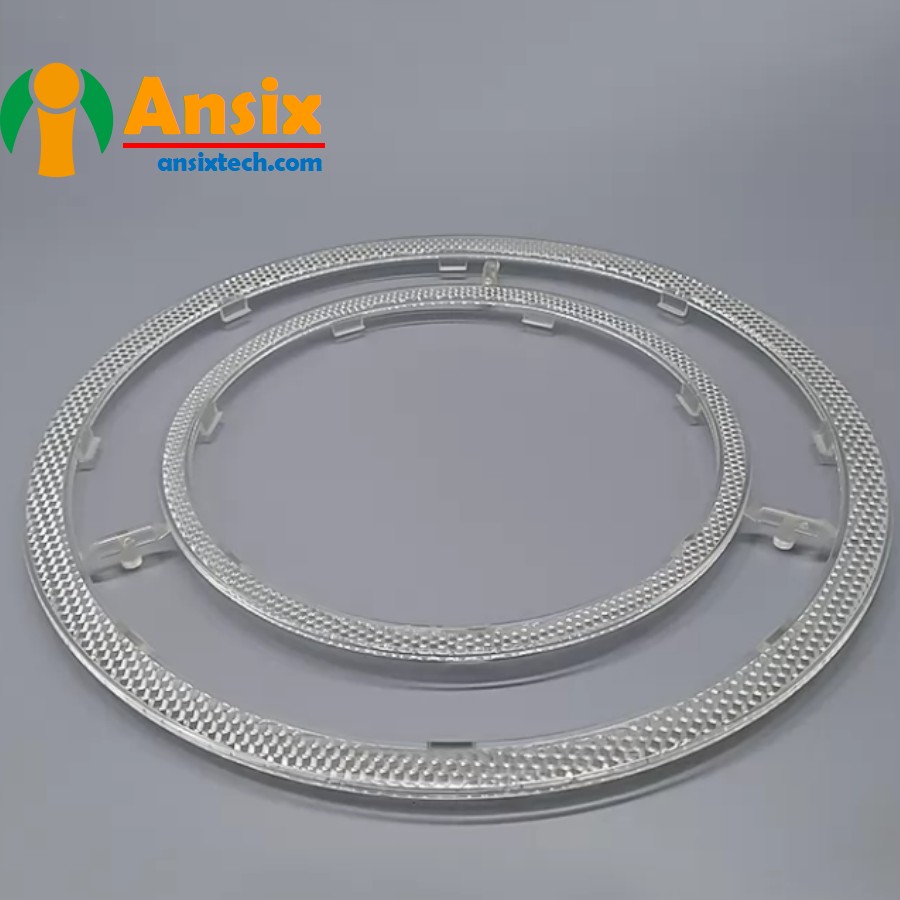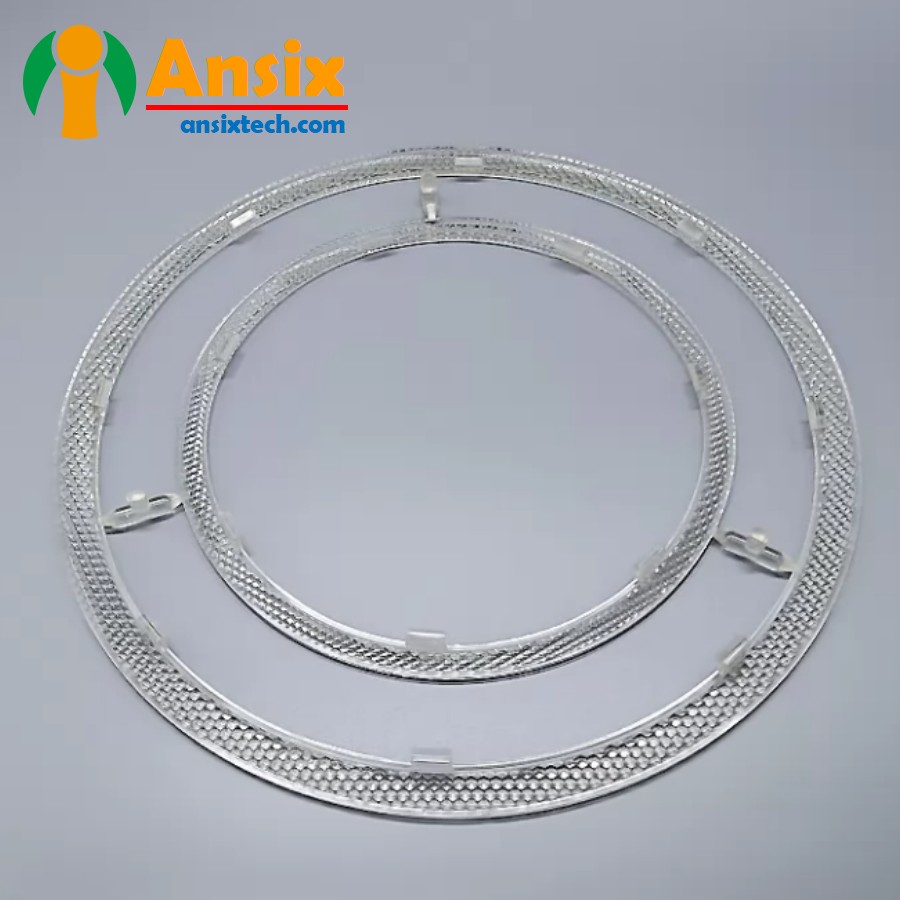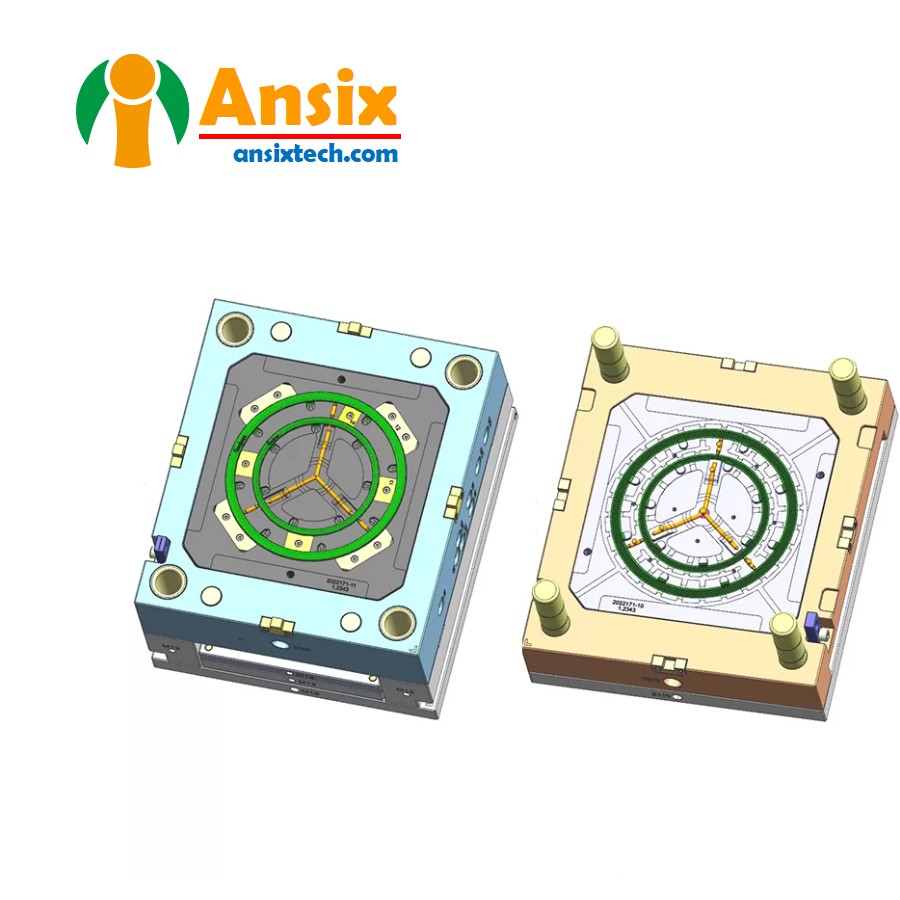Home appliance Reflektorring plastic injection mold Light guide strip injection molding
FEATURES
-
Mold Description
Product Materials:
PC
Mold Material:
S136ESR
Number of Cavities:
1*1
Glue Feeding Method:
Cold runner
Cooling Method:
Water cooling
Molding Cycle
42.5s
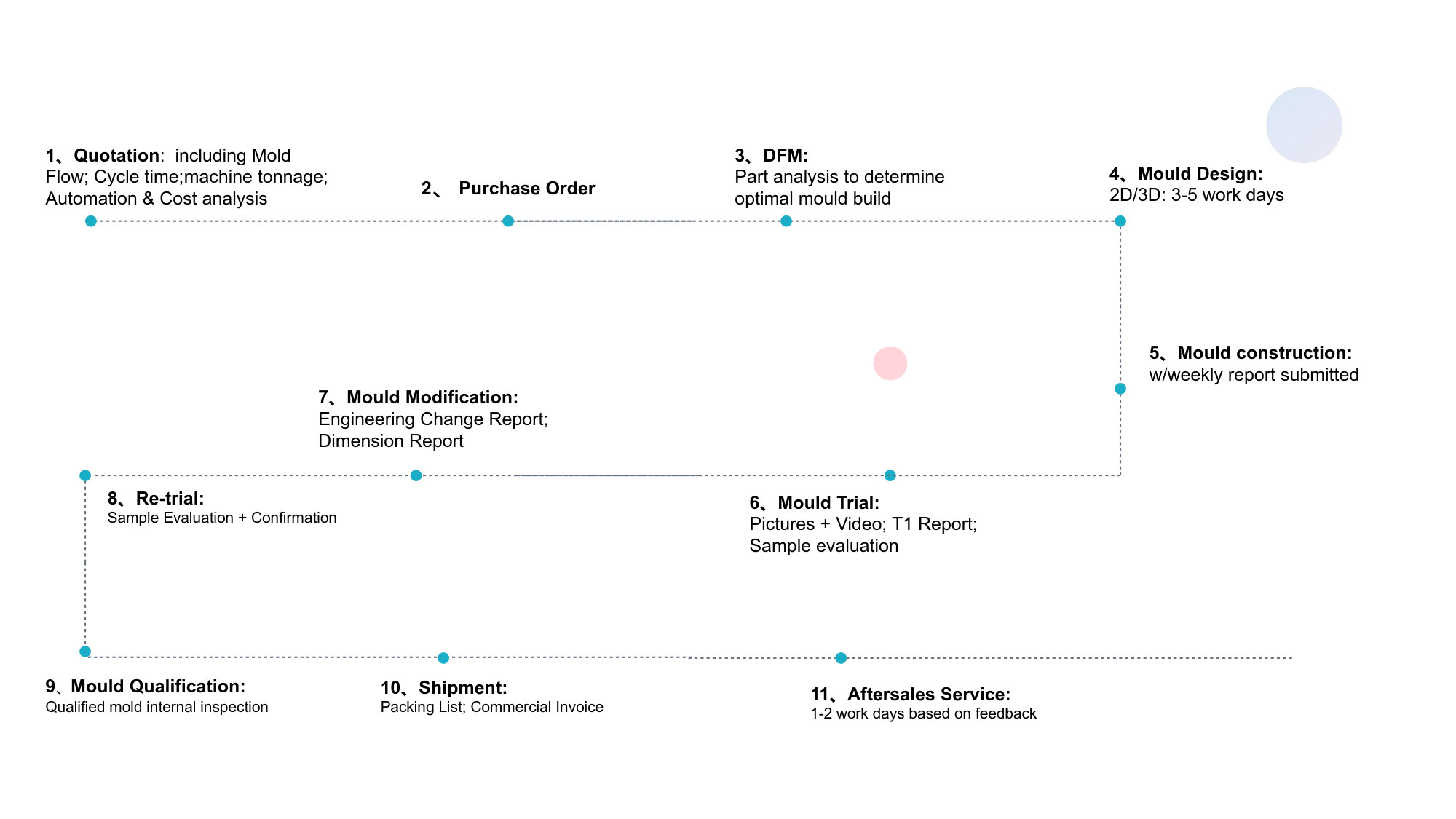
- Home appliance Light guide strip Mold flow analysis and mold designMold flow analysis and mold design of home appliance light guide strip molds:Mold design:According to the design requirements of the light guide strip, determine the structure of the mold, including the mold cavity, mold core, demoulding system, cooling system, etc.Ensure that the accuracy and size of the mold meet the requirements to ensure the quality and stability of injection molding.Consider the durability and ease of maintenance of the mold, and rationally design the structure and parts of the mold to improve the life and ease of maintenance of the mold.Mold flow analysis:Use mold flow analysis software to import the CAD model of the light guide strip and set the injection molding process parameters, such as injection speed, temperature, pressure, etc.Conduct mold flow analysis to simulate melt flow, filling, cooling and other processes during the injection molding process to evaluate filling performance, bubbles, short shots and other defects, and optimize injection molding process parameters.During the mold design and mold flow analysis process, you need to pay attention to the following points:Ensure filling performance: Through mold flow analysis, the injection molding process parameters are optimized to ensure good filling performance and avoid defects.Design of cooling system: Reasonably design the cooling system to ensure good cooling effect during the injection molding process and improve production efficiency and product quality.Design of demoulding system: According to the shape and requirements of the light guide strip, design a suitable demoulding system to ensure that the light guide strip can be demoulded smoothly and avoid damage and deformation.Injection molding sequence and injection point location: Determine the injection sequence and injection point location to ensure that the plastic material can fully fill the mold cavity and avoid voids and defects.Through reasonable mold design and mold flow analysis, high-quality home appliance light guide strip molds can be obtained. Please note that mold design and mold flow analysis require professional knowledge and experience. It is recommended to cooperate with a professional mold design and mold flow analysis team to ensure the accuracy and reliability of design and analysis.
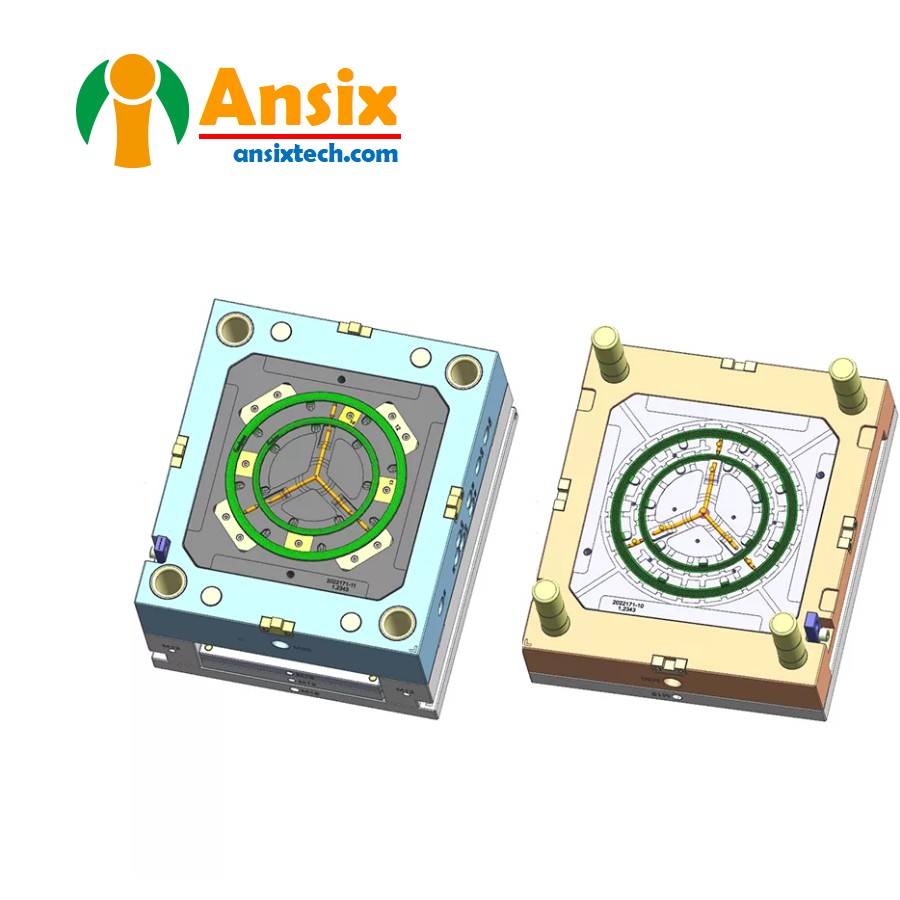

- Home appliance Light guide strip of the mold manufacturing process and product material selectionThe manufacturing and processing of home appliance light guide strip molds and the selection and application of light guide strip materials:Mold manufacturing and processing:According to the mold design, select appropriate processing technology and equipment, such as CNC machining center, EDM machine, etc.Processing of mold parts, including mold cavity, mold core, demoulding system, cooling system, etc. Ensure that the processing accuracy and size meet the requirements.Assemble mold parts to ensure accurate fit and adjustment of parts and ensure the stability and reliability of the mold.Light guide strip material selection:Select the appropriate injection molding material according to the requirements of the light guide strip. Commonly used materials include PC (polycarbonate).PC material has good transparency, heat resistance and weather resistance. It is suitable for the manufacture of light guide strips and can meet the light transmittance and durability requirements of the product.PC material also has good chemical resistance and impact resistance, and can adapt to chemicals and impacts in the home appliance environment.During the mold manufacturing process and light guide strip material selection and application process, you need to pay attention to the following points:Processing accuracy and size control: Ensure that the processing accuracy and size of mold parts meet the requirements to ensure the quality and stability of injection molding.Surface treatment of the mold: According to the requirements of the light guide strip, perform appropriate surface treatment, such as grinding, polishing, etc., to improve the light transmittance and smoothness of the light guide strip.Control of injection molding process parameters: According to the characteristics of the PC material, the injection molding process parameters are reasonably designed and controlled to ensure that the filling performance and curing effect of the material meet the requirements.Material selection and certification: Select injection molding materials that meet relevant standards and certification requirements to ensure product safety and hygiene.The manufacturing and processing of home appliance light guide strip molds has the advantages of efficient production, precision control, multi-functional design and cost saving. When selecting light guide strip materials, factors such as transparency, heat resistance, chemical resistance, and impact resistance need to be considered. Through reasonable processing and material selection, high-quality light guide strip production can be achieved. It is recommended to work with professional mold manufacturing and injection molding material suppliers to ensure accuracy and reliability of manufacturing and selection.
- Home appliance Light guide strip Mass production and Quality controlTo achieve mass production and secondary processing of home appliance light guide strips, improve production efficiency, control costs and ensure process quality:Improvement of production efficiency:Automated production equipment: Use automated injection molding machines and robotic systems to achieve automated production, reduce manual operations and improve production efficiency.Production process optimization: Optimize the production process, reduce non-production time, and improve production efficiency. For example, rationally arrange production plans, optimize material supply chains, etc.Process improvement: Improve production efficiency by optimizing injection molding process parameters, reducing scrap rates, increasing production speed, etc.Cost control:Material cost control: Select appropriate injection molding materials, balance material performance and cost based on product requirements and cost considerations.Mold cost control: optimize mold design and manufacturing to reduce mold manufacturing costs. You can consider using standard mold parts, mold sharing, etc. to reduce mold costs.Production process optimization: Reduce production costs by optimizing injection molding process parameters, reducing scrap rates, and improving production efficiency.Process quality assurance:Establish a complete quality control system, including quality inspection, process control and defective product processing, to ensure that products meet quality standards.Conduct inspections and tests on product appearance quality, dimensional accuracy, physical properties, etc. to ensure product quality and consistency.Monitor injection molding process parameters and key control points in the production process, and make timely adjustments and optimizations to ensure the stability and consistency of the production process.Through reasonable production efficiency improvement, cost control and process quality assurance measures, mass production of home appliance light guide strips can be achieved and product quality and consistency can be ensured. At the same time, by optimizing the production process and using automated equipment, production efficiency can be improved and production costs reduced. It is recommended to work with a professional mold manufacturing and injection molding processing team to ensure accuracy and reliability of manufacturing and processing.


